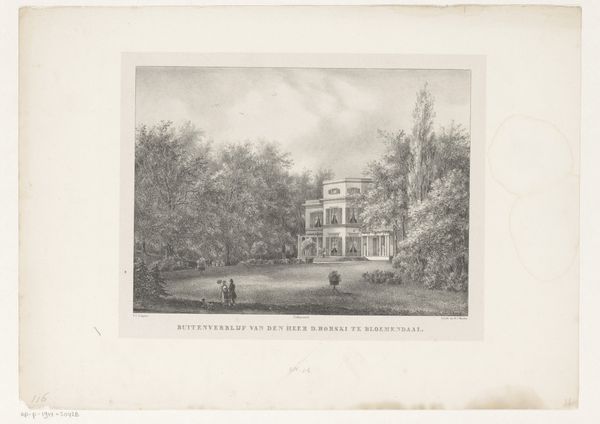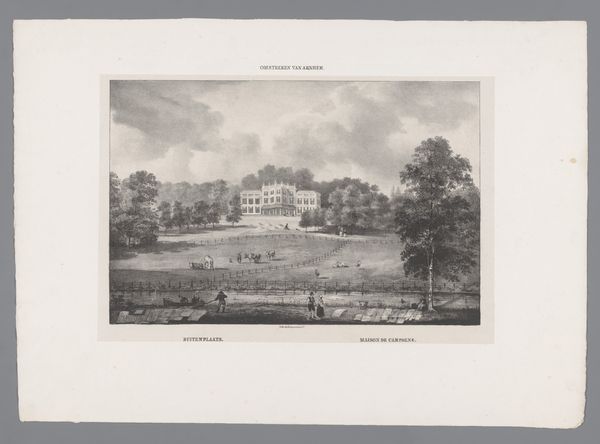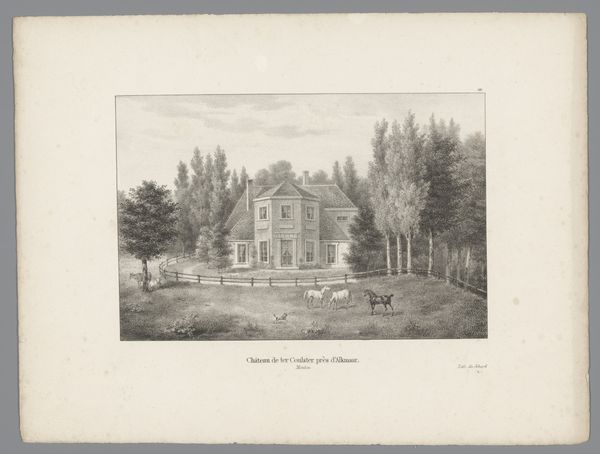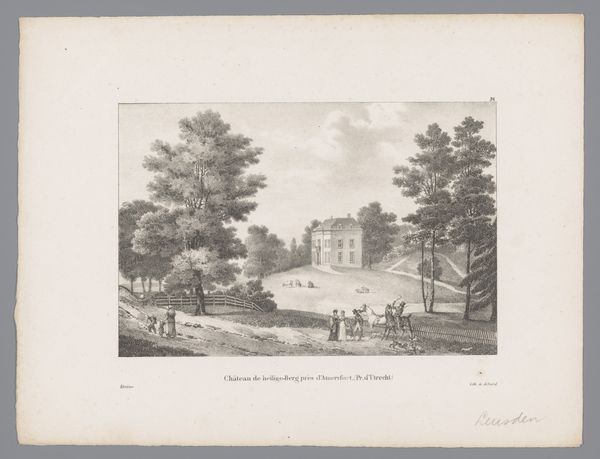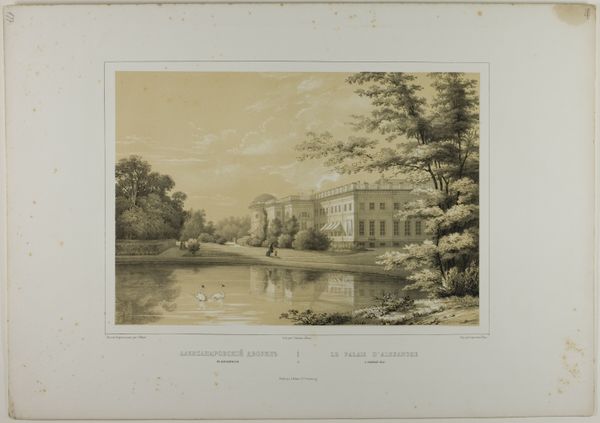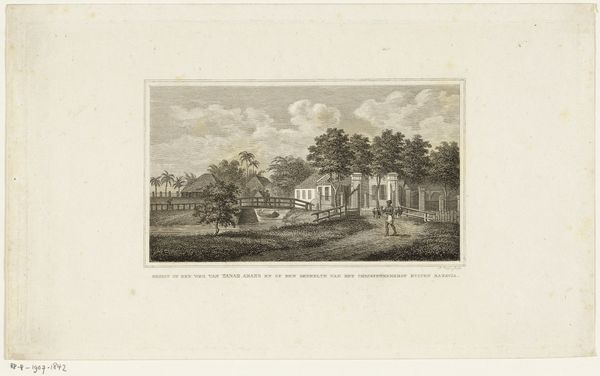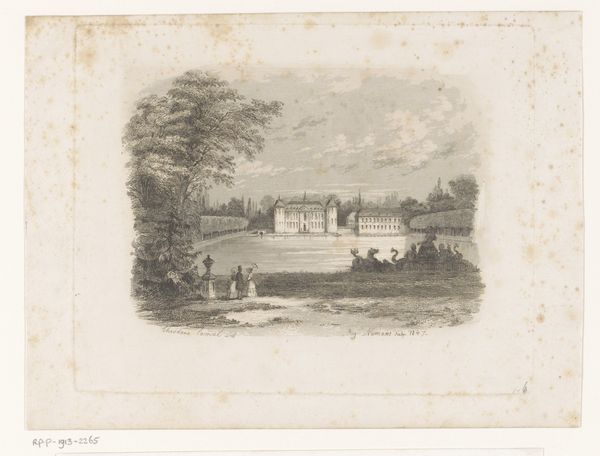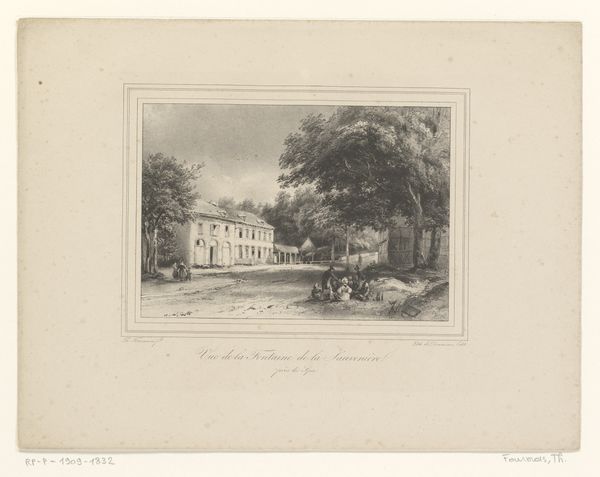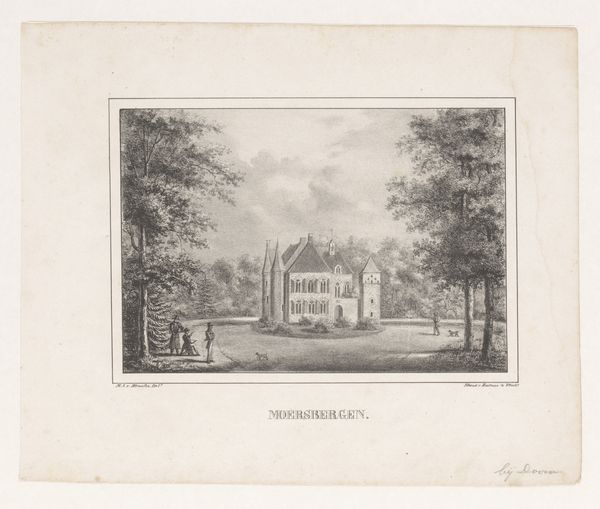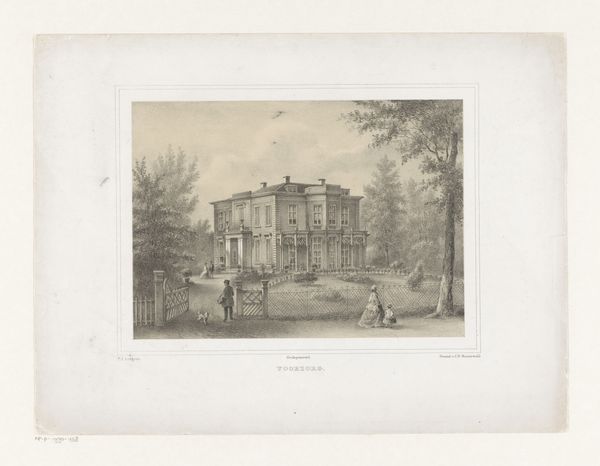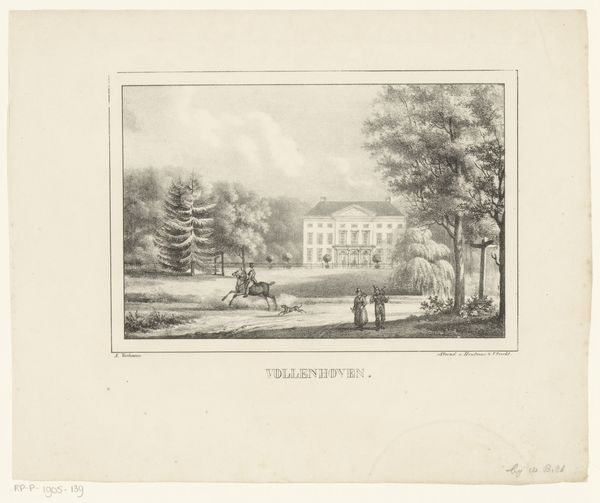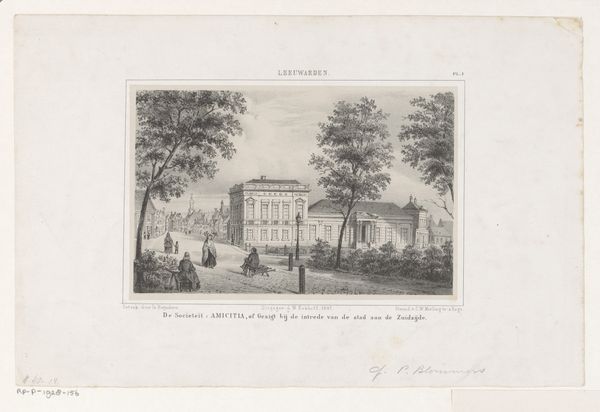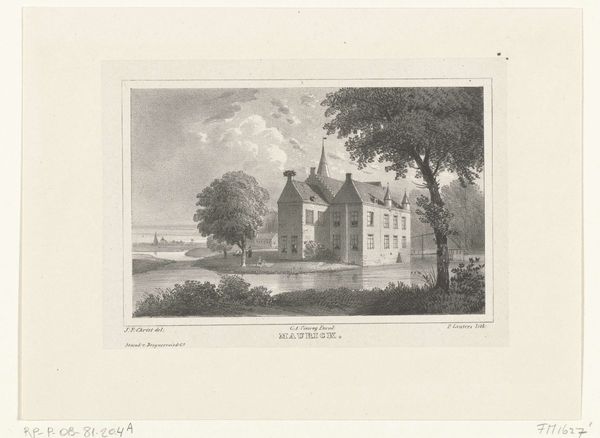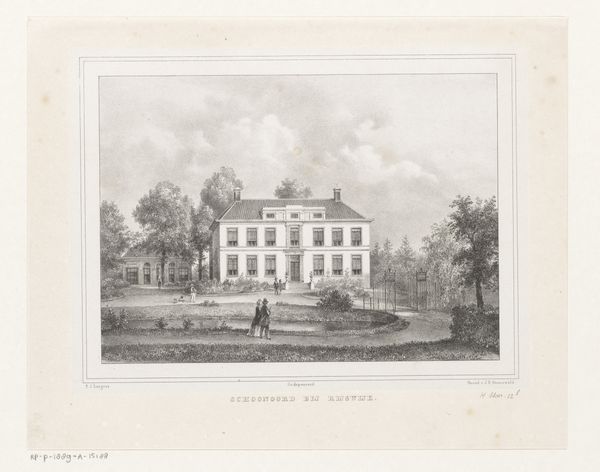
print, paper, engraving
#
dutch-golden-age
#
ink paper printed
# print
#
landscape
#
paper
#
romanticism
#
cityscape
#
engraving
#
monochrome
Dimensions: height 245 mm, width 345 mm
Copyright: Rijks Museum: Open Domain
Wilhelmus van Groenewoud created this print of Kasteel Oud-Poelgeest using lithography, a process that democratized image-making in the 19th century. Unlike traditional engraving, lithography relies on the chemical repulsion between oil and water. The artist would have drawn the image on a stone or metal plate with a greasy crayon, then treated the surface so that ink would adhere only to the drawn areas. This method allowed for relatively quick reproduction, making images more accessible to a wider audience. The print's delicate gradations of tone and subtle details speak to the skill required to master this technique. The image invites reflection on the rise of the middle class and their increasing access to art and information, facilitated by industrial production. Considering the materials and processes behind this artwork allows us to appreciate not only its aesthetic qualities, but also its place within a rapidly changing society.
Comments
No comments
Be the first to comment and join the conversation on the ultimate creative platform.
